
Last week I shared a post about my visit to the reserve Huilo Huilo in southern Chile and I mentioned that, due to the large size of its area, and the amount of things that can be found within its territory, I was going to review some things in a separate post. One of those things I mentioned was a very particular museum I saw in that place and to briefly settle the debt mentioned, I bring you today my visit to this curious space.
La semana pasada les compartí una publicación sobre mi visita a la reserva de Huilo Huilo en el Sur de Chile y les mencioné que, debido a la gran extensión de su superficie, y a la cantidad de cosas que se pueden encontrar dentro de su territorio, iba a reseñar algunas cosas en un post aparte. Una de esas cosas que mencioné fue un museo muy particular que vi en ese lugar y para saldar brevemente la deuda mencionada, les traigo hoy mi visita a este curioso espacio.
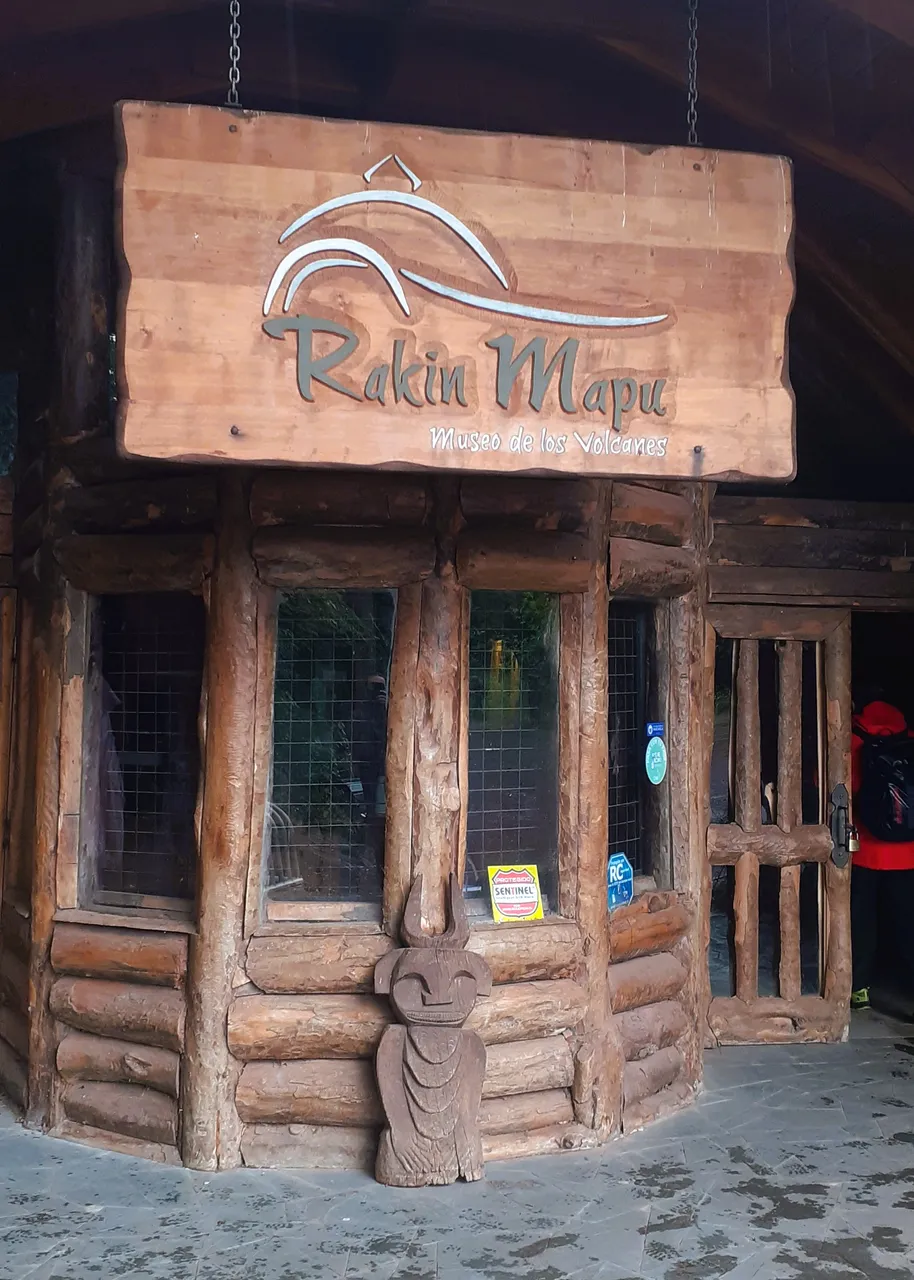
Walking through a sector of Huilo Huilo called Deer Park, suddenly, in the middle of a dense forest is a clearing where stands a building with an unusual architecture. Halfway between the house of a Hobbit or the lair of the Knights of the Round Table, the building of the Museum of Volcanoes, stands out among the landscape, but also merges with it. It's clearly a man-made construction, but it doesn't clash with its surroundings. The name of the museum is Rakin Mapu, which in Mapuche language can be translated as “Land of Telling”, because Mapu means Land and Rakin can be translated as Telling. And that is what this place does: it tells a story. And not just any Mapuche or Chilean story or legend, but a broader, older and much more universal story, since inside the museum, the tour takes us through the evolution of energy and the formation of the Earth, from the Big Bang to the appearance of life. What is told in the Rakin Mapu is the history of the universe. And the way the interior is designed is as striking as the exterior of the building: instead of being sectored by rooms separated by walls, the museum is a kind of circle, with an upper dome whose route is designed to start from the top, where the chronological beginning (the Big Bang) would be, making a spiral through the place until reaching the lower level and the appearance men and the first communities.
Caminando por un sector de Huilo Huilo denominado Parque de los Ciervos, de pronto, en medio de un bosque muy tupido se encuentra un claro en donde se erige una construcción con una arquitectura poco usual. A medio camino entra la casa de un Hobbit o la guarida de los caballeros de la mesa redonda, el edificio del Museo de los Volcanes, resalta entre el paisaje, pero también se funde con él. Claramente se ve que es una construcción hecha por el hombre, pero no desentona de su entorno. El nombre del museo es Rakin Mapu que en lengua mapuche se puede traducir como "Tierra de Contar", porque Mapu significa Tierra y Rakin puede traducirse como Contar. Y eso es lo que hace ese lugar: contar una historia. Y no cualquier historia o leyenda mapuche o chilena, sino una historia más amplia, más antigua y mucho más universal, ya que al interior del museo, el recorrido nos lleva a través de la evolución de la energía y la formación de la Tierra, desde el Big Bang hasta la aparición de la vida. Lo que se cuenta en el Rakin Mapu es la historia del universo. Y la forma en que está diseñado el interior es tan llamativa como el exterior del edificio: en lugar de estar sectorizado por salas separadas por muros, el museo es una especie de círculo, con una cúpula superior cuyo recorrido está diseñado para iniciarse desde la parte de arriba, en donde estaría el inicio cronológico (el Big Bang), haciendo una espiral a través del lugar hasta llegar al nivel inferior y la aparición del hombre y las primeras comunidades.
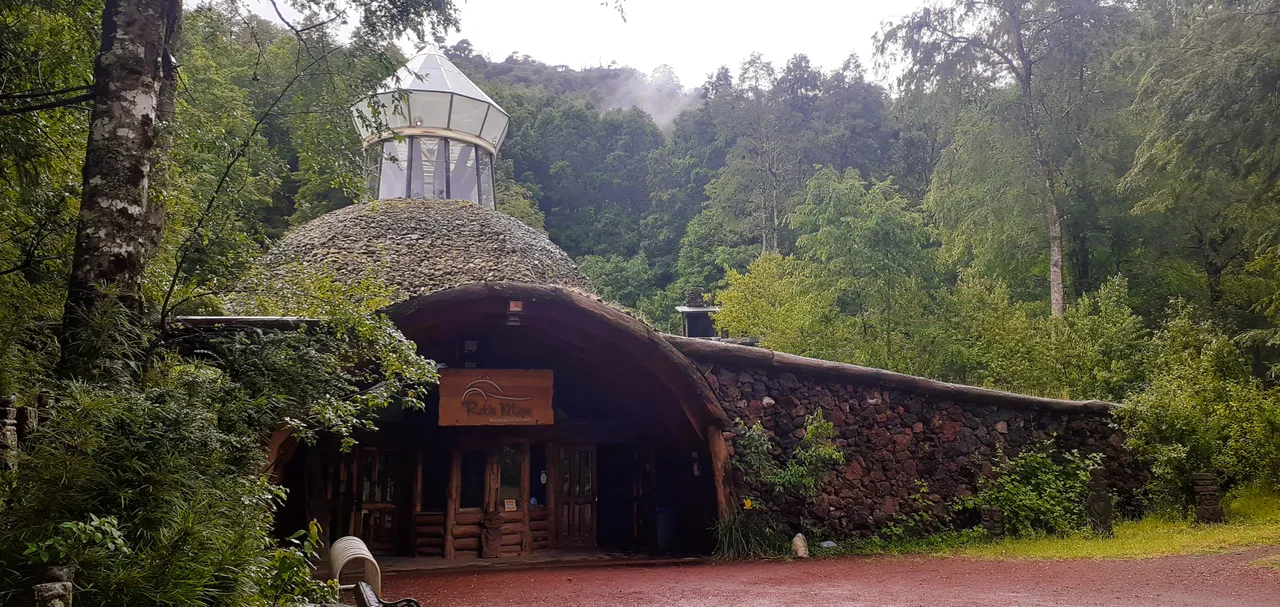
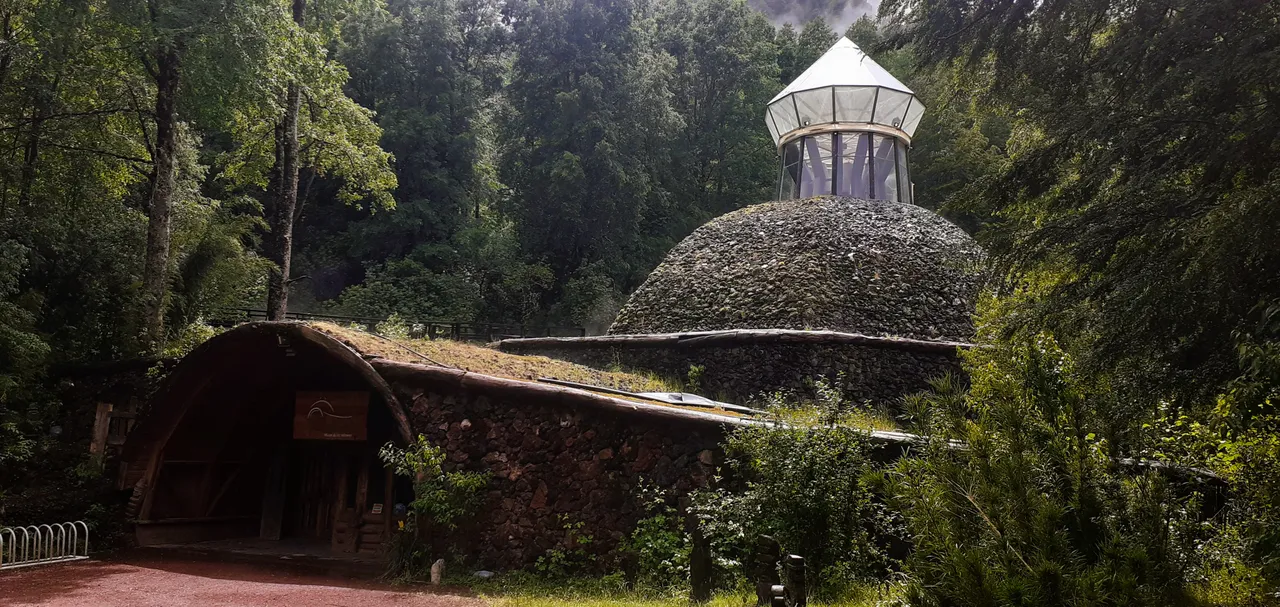
Although the structure is designed so that the tour is divided into five sectors, at the time of my visit, only the two lower levels were finished (i.e., the most recent periods of the aforementioned history) and as I seem to remember an employee of the Museum told us that the other rooms are expected to be ready for the tour from 2028. The idea is to start in the upper dome (the smallest space) with the Big Bang and then go down to see how the universe, galaxies and planets were formed, until the appearance of life and human beings.
Si bien la estructura está diseñada para que el recorrido se divida en cinco sectores, al momento de visitarlo, sólo estaban terminados los dos niveles inferiores (es decir, los períodos más recientes de esa historia mencionada) y según creo recordar un empleado del Museo nos indicó que se espera que las demás salas están habilitadas para su recorrido a partir del año 2028. La idea es comenzar en la cúpula superior (el espacio más pequeño) con el Big Bang y luego ir descendiendo para ver cómo se formaron el universo, las galaxias y los planetas, hasta llegar a la aparición de la vida y los seres humanos.
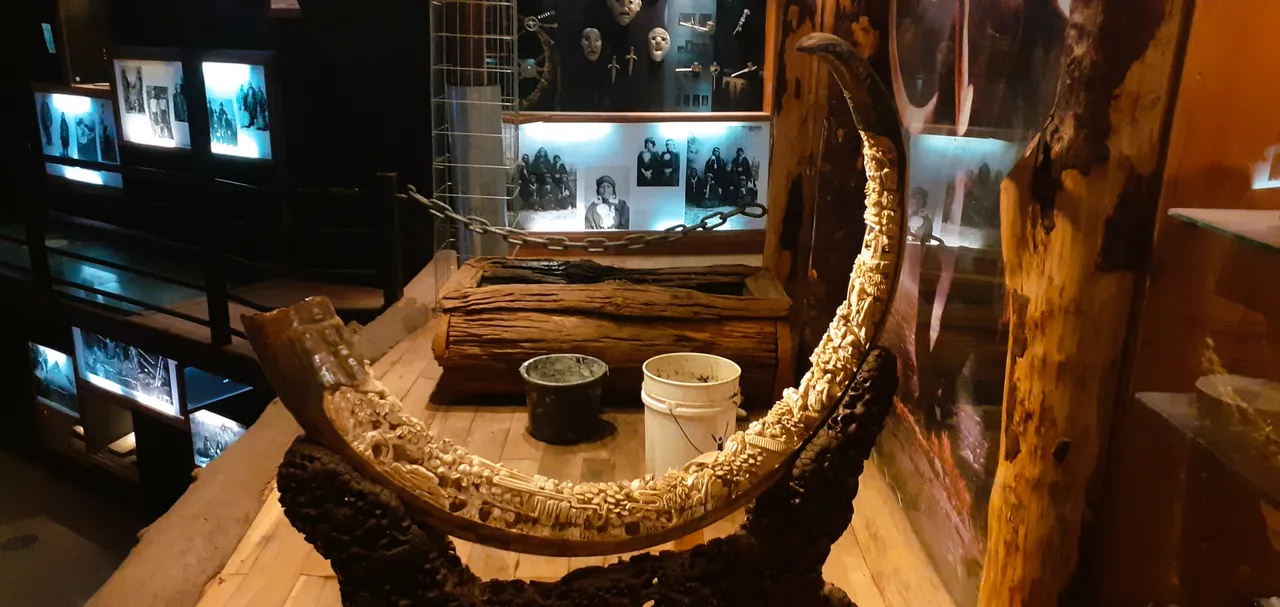 | |
|---|---|
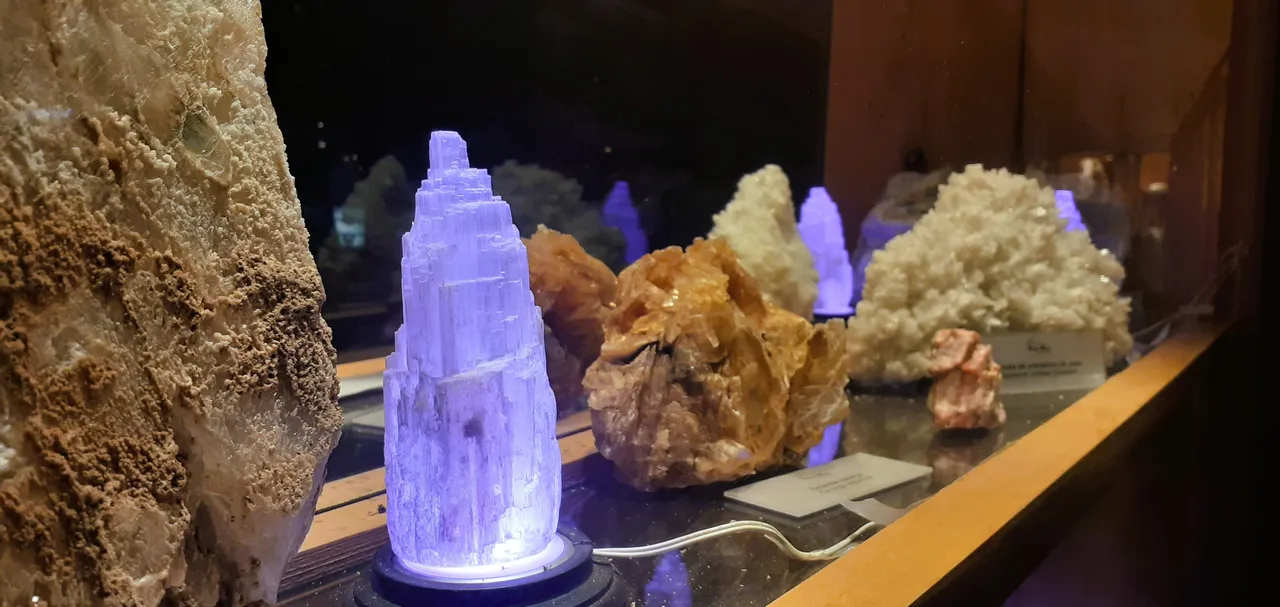 |
Although I was only able to visit 2 of the 5 planned areas, it's worth noting that these are the two rooms with the largest amount of works and material on display. Gold and silver work, looms, Mapuche masks and a large number of things created by man are on the last level (last from top to bottom, but first level from the entrance to the museum), and on the next level you can see different minerals, stones, quartz. One of the objects that caught my attention was a carved mammoth tusk, a piece as special as cruel. I don't agree with animal abuse and I don't believe that this tusk was taken from an animal that died of natural causes, but it's impossible not to marvel at the level of detail of the work on the tusk. I once saw one at the Palacio Rioja in Viña del Mar, but while that one had clearly oriental motifs and human figures, the one I saw at Rakin Mapu had some silhouettes and figures that were more cryptic to me. Have any of you seen an intricately carved mammoth or elephant tusk? I would like to hear about your experiences.
Aunque apenas pude visitar 2 de las 5 áreas planificadas, vale la pena destacar que son las dos salas con mayor cantidad de obras y de material a exhibir. Orfebrería, telares, máscaras mapuches y una gran cantidad de cosas creadas por el hombre se encuentran en el último nivel (último de arriba hacia abajo, pero primer nivel desde la entrada al museo), y en el siguiente nivel se pueden apreciar distintos minerales, piedras, cuarzos. Uno de los objetos que más llamó mi atención fue un colmillo de mamut tallado, una pieza tan especial como cruel. No estoy de acuerdo con el maltrato animal y no creo que ese colmillo lo hayan tomado de un animal fallecido por causas naturales, pero es imposible no maravillarse con el nivel de detalle del trabajo sobre el colmillo. Una vez vi uno en el Palacio Rioja en Viña del Mar, pero mientras que aquel presentaba motivos y figuras humanas claramente orientales, el que vi en el Rakin Mapu tenía algunas siluetas y figuras más crípticas para mí, ¿alguno de ustedes ha visto un colmillo de mamut o de elefante entreramente tallado? Me gustaría conocer sus experiencias.

In addition to the objects displayed in the showcases, the building itself is a showpiece. One of the most impressive things is that the dome is made of glass, which not only allows sunlight to enter the central hall, but at the zenith, the moment when the sun is perpendicularly overhead, manages to sneak through the dome and illuminate the floor which is decorated with the twelve constellations of the zodiacal signs and depending on the time of year in which one visits, the sun's rays can illuminate one or another, which in a way is also a tribute to ancient science and astronomers of early civilizations. As good news, I tell you that the 5th level, the highest, has already been inaugurated (not so the intermediate sector of the third floor) so you will be able to see even more things than I have just mentioned in this post, have you ever been in a museum like this one? would you like to visit it? I'll read you in the comments.

Además de lo objetos que están exhibidos en las vitrinas, el edificio en sí es una pieza de exhibición. Una de las cosas más impresionantes es que la cúpula es de vidrio, lo que no sólo permite la entrada de luz solar en el hall central, sino que en el cénit, el momento en el que el sol se encuentra perpendicularmente sobre el lugar, logra colarse por la cúpula e iluminar el suelo que está decorado con las doce constelaciones de los signos zodiacales y según la época del año en la que uno lo visite, los rayos del sol pueden iluminar una u otra, lo que de alguna manera también es un homenaje a la ciencia antigua y a los astrónomos de las primeras civilizaciones. Como buena noticia, les digo que el 5to nivel, el más alto, ya fue inaugurado (no así el sector intermedio del tercer piso) así que podrán ver todavía más cosas de las que yo les acabo de nombrar en este post, ¿alguna vez has estado en un museo como este? ¿te gustaría visitarlo? Los leo en los comentarios.
Text and Pictures: | Texto e imágenes:
Other posts that may interest you | Otros posts que pueden interesarte:
 |
|---|